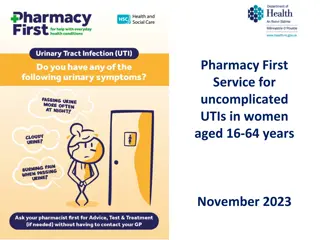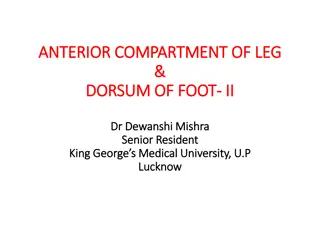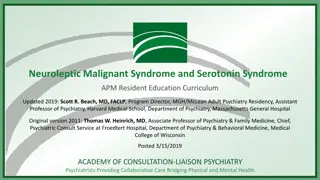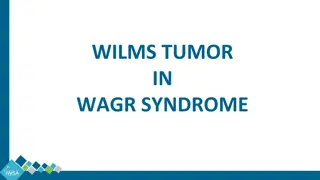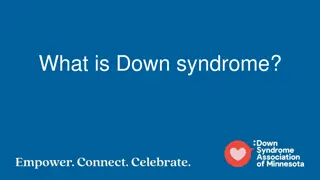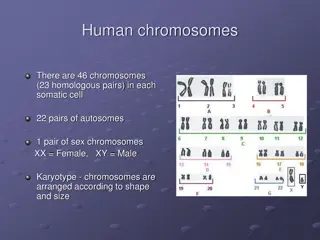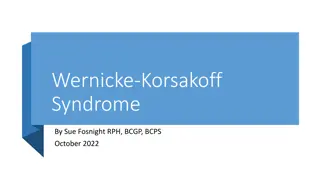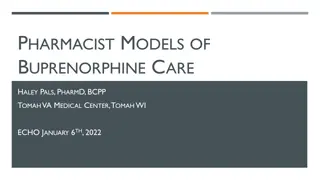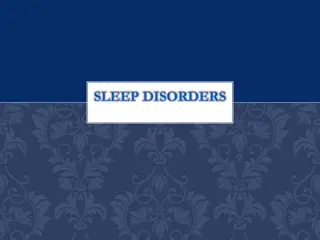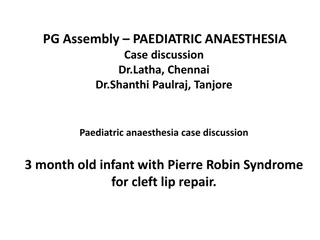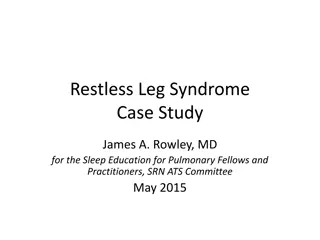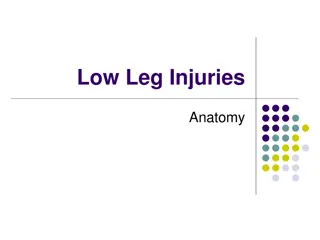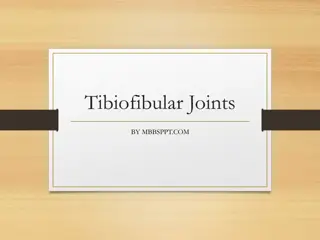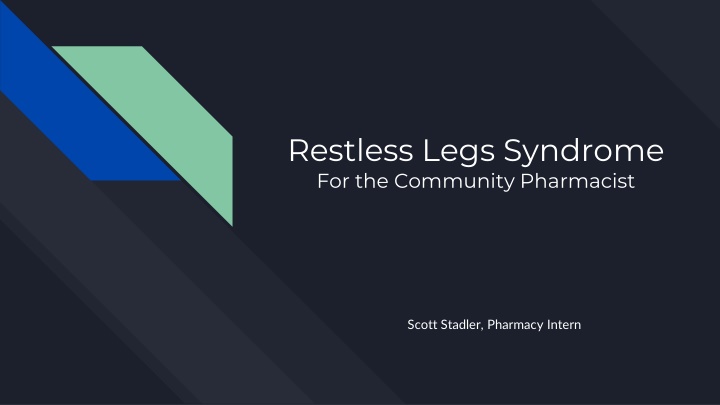
Restless Legs Syndrome (RLS) and its Factors
Restless Legs Syndrome (RLS) is a disorder characterized by an urge to move the legs during inactivity, with prevalence varying by region, ethnicity, sex, and age. Factors such as family history, low iron stores, caffeine intake, and certain medications can exacerbate RLS symptoms. Learn more about RLS, its prevalence, risk factors, and exacerbating factors in this informative guide.
Download Presentation

Please find below an Image/Link to download the presentation.
The content on the website is provided AS IS for your information and personal use only. It may not be sold, licensed, or shared on other websites without obtaining consent from the author. If you encounter any issues during the download, it is possible that the publisher has removed the file from their server.
You are allowed to download the files provided on this website for personal or commercial use, subject to the condition that they are used lawfully. All files are the property of their respective owners.
The content on the website is provided AS IS for your information and personal use only. It may not be sold, licensed, or shared on other websites without obtaining consent from the author.
E N D
Presentation Transcript
Restless Legs Syndrome For the Community Pharmacist Scott Stadler, Pharmacy Intern
What is Restless Legs Syndrome (RLS)? Definition: a disorder characterized by an often unpleasant or uncomfortable urge to move the legs that occurs during periods of inactivity, particularly in the evenings, and is transiently relieved by movement Pathophysiology is not well understood Dopaminergic? Iron deficiency in CNS? Both? Ondo, W. G. (2021). Clinical features and diagnosis of restless legs syndrome and periodic limb movement disorder in adults. In: UpToDate, Post, TW (Ed), UpToDate, Waltham, MA, 2021.
Prevalence Varies widely among region, ethnicity, sex, and age Regions Most common in european and north american countries Studies show roughly 5-15% of population suffer from RLS As low as <0.1% in African countries Sex Higher rates in women than men Less difference in women who have never given birth vs men Age Prevalence increases with age, but can still be seen in children. (50% as common) Ondo, W. G. (2021). Clinical features and diagnosis of restless legs syndrome and periodic limb movement disorder in adults. In: UpToDate, Post, TW (Ed), UpToDate, Waltham, MA, 2021.
Risk Factors Family history is present in roughly 40-60% of cases Low iron stores Serum ferritin is most closely correlated Uremia secondary to renal failure Our dialysis patients Pregnancy Neuropathy Other: Spinal cord disease Multiple sclerosis Parkinson Disease Ondo, W. G. (2021). Clinical features and diagnosis of restless legs syndrome and periodic limb movement disorder in adults. In: UpToDate, Post, TW (Ed), UpToDate, Waltham, MA, 2021.
Exacerbating Factors Caffeine intake Poor sleep hygiene/sleep deprivation MEDICATIONS Ondo, W. G. (2021). Clinical features and diagnosis of restless legs syndrome and periodic limb movement disorder in adults. In: UpToDate, Post, TW (Ed), UpToDate, Waltham, MA, 2021.
Exacerbating Factors Medications: Antihistamines Specifically first generation Dopamine receptor antagonists Antipsychotics, anti nausea medications Antidepressants Mirtazapine, TCAs are worst offenders Can still be exacerbated by SSRIs, SNRIs, but not to same extent Bupropion = antidepressant of choice Ondo, W. G. (2021). Clinical features and diagnosis of restless legs syndrome and periodic limb movement disorder in adults. In: UpToDate, Post, TW (Ed), UpToDate, Waltham, MA, 2021.
Patient Presentation Need to move Soreness Restless Crawling Electric Tingling Pulling Cramping Discomfort Creeping Itching Ondo, W. G. (2021). Clinical features and diagnosis of restless legs syndrome and periodic limb movement disorder in adults. In: UpToDate, Post, TW (Ed), UpToDate, Waltham, MA, 2021.
Treatment Iron Replacement Don t give empirically If fasting serum ferritin <75ng/ml, recommended 325mg ferrous sulfate every evening or every other Can take several months for symptom improvement Silber, M. H. (2021). Treatment of restless legs syndrome and periodic limb movement disorder in adults. In: UpToDate, Post, TW (Ed), UpToDate, Waltham, MA, 2021.
Treatment - Non-Pharmacologic Mental alerting activities, such as working on a computer or doing crossword puzzles, at times of rest or boredom Avoidance of aggravating factors, as discussed before Moderate regular exercise For symptomatic relief Walking Bicycling Soaking the affected limbs and leg massage Compression? Not much data, but anecdotal reports of symptom improvement Short daily hemodialysis for patients with end-stage kidney disease Silber, M. H. (2021). Treatment of restless legs syndrome and periodic limb movement disorder in adults. In: UpToDate, Post, TW (Ed), UpToDate, Waltham, MA, 2021.
Treatment - Pharmacologic Alpha-2-Delta Calcium Channel Ligands Dopamine Agonists Ropinirole Pramipexole Rotigotine Gabapentin Enacarbil Gabapentin Pregabalin Silber, M. H. (2021). Treatment of restless legs syndrome and periodic limb movement disorder in adults. In: UpToDate, Post, TW (Ed), UpToDate, Waltham, MA, 2021.
Treatment - Pharmacologic Alpha-2-Delta Calcium Channel Ligands Gabapentin Enacarbil Recommended dose: 600mg in early evening Side effects: Drowsiness, dizziness, weight gain, peripheral edema Silber, M. H. (2021). Treatment of restless legs syndrome and periodic limb movement disorder in adults. In: UpToDate, Post, TW (Ed), UpToDate, Waltham, MA, 2021. Gabapentin Enacarbil Lexi-Drugs. Lexicomp. Wolters Kluwer Health, Inc. Riverwoods, IL.
Treatment - Pharmacologic Alpha-2-Delta Calcium Channel Ligands Pregabalin Recommended dosing: Initial: 50 to 75mg 1-3 hours before bedtime Titrate gradually, 75-150mg every 5 to 7 days, up to effective dose of 150-450mg Side effects: Drowsiness, dizziness, weight gain, peripheral edema Silber, M. H. (2021). Treatment of restless legs syndrome and periodic limb movement disorder in adults. In: UpToDate, Post, TW (Ed), UpToDate, Waltham, MA, 2021. Pregabalin. Lexi-Drugs. Lexicomp. Wolters Kluwer Health, Inc. Riverwoods, IL.
Treatment - Pharmacologic Alpha-2-Delta Calcium Channel Ligands Gabapentin Recommended dosing: Initial: 100 to 300mg 2 hours before bedtime Increase dose every 1-2 weeks as tolerated up to 2.4g One-third of total daily dose midday, and remaining two-thirds in the evening Side effects: Drowsiness, dizziness, weight gain, peripheral edema Silber, M. H. (2021). Treatment of restless legs syndrome and periodic limb movement disorder in adults. In: UpToDate, Post, TW (Ed), UpToDate, Waltham, MA, 2021. Gabapentin. Lexi-Drugs. Lexicomp. Wolters Kluwer Health, Inc. Riverwoods, IL.
Treatment - Pharmacologic Dopamine Agonists Pramipexole Recommended dosing: Initial: 0.125mg once daily ~2 hours before onset of symptoms Increase by 0.125mg every 2-3 days, up to 0.75mg, until effective dose reached Side effects: Nausea, lightheadedness, fatigue Loss of impulse control 90% renally excreted Silber, M. H. (2021). Treatment of restless legs syndrome and periodic limb movement disorder in adults. In: UpToDate, Post, TW (Ed), UpToDate, Waltham, MA, 2021. Pramipexole. Lexi-Drugs. Lexicomp. Wolters Kluwer Health, Inc. Riverwoods, IL.
Treatment - Pharmacologic Dopamine Agonists Ropinirole Recommended dosing: Initial: 0.25mg ~2 hours before onset of symptoms Increase by 0.25mg every 2-3 days, up to 4mg, until effective dose reached Side effects: Nausea, lightheadedness, fatigue Loss of impulse control Primarily metabolized Silber, M. H. (2021). Treatment of restless legs syndrome and periodic limb movement disorder in adults. In: UpToDate, Post, TW (Ed), UpToDate, Waltham, MA, 2021. Ropinirole. Lexi-Drugs. Lexicomp. Wolters Kluwer Health, Inc. Riverwoods, IL.
Treatment - Pharmacologic Dopamine Agonists Rotigotine Recommended dosing: Initial: 1mg/24hr patch Increase by 1mg/24 every week, up to 3mg/24hr, until effective dose reached Side effects: Nausea, lightheadedness, fatigue Loss of impulse control Application site reactions Silber, M. H. (2021). Treatment of restless legs syndrome and periodic limb movement disorder in adults. In: UpToDate, Post, TW (Ed), UpToDate, Waltham, MA, 2021. Rotigotine. Lexi-Drugs. Lexicomp. Wolters Kluwer Health, Inc. Riverwoods, IL.
Complementary and Alternative Medicine Silber, M. H. (2021). Treatment of restless legs syndrome and periodic limb movement disorder in adults. In: UpToDate, Post, TW (Ed), UpToDate, Waltham, MA, 2021.
Complications with Treatment Augmentation: refers to an overall increase in RLS symptoms requiring higher doses of medications, earlier symptom onset, increase duration of symptoms, shorter drug duration, and spread of symptoms to other body parts Reassess iron stores Discuss changes in lifestyle factors Increase and/or split doses Switch to ER formulation of dopamine agonists Switch to Alpha-2-Delta Calcium Channel Ligand Refractory RLS: refers to RLS that has become resistant to monotherapy with tolerable doses due to reduced efficacy, augmentation, or adverse effects Combination therapy Consider benzodiazepines or low- potency opioid Clonazepam most studied Low potency opioid = tramadol/codeine Silber, M. H. (2021). Treatment of restless legs syndrome and periodic limb movement disorder in adults. In: UpToDate, Post, TW (Ed), UpToDate, Waltham, MA, 2021.
Treatment - Special Populations Pregnancy End Stage Renal Disease Rotigotine Gabapentin 200-300mg post dialysis Non-pharmacologic preferred Check iron stores For severe symptoms: Clonazepam Carbidopa/Levodopa Silber, M. H. (2021). Treatment of restless legs syndrome and periodic limb movement disorder in adults. In: UpToDate, Post, TW (Ed), UpToDate, Waltham, MA, 2021.
Patient Support Can be a debilitating disease for patients Insomnia Constant awakenings Anxiety Depression www.rls.org Provides virtual and in-person support groups for people with RLS
Take-home Points RLS is defined as an intense urge to move the legs with accompanying negative sensations Be familiar with how patients describe their symptoms For patients seeking self care options, assess for potential augmentation Do RLS symptoms appear earlier than when the drug was first started? Are higher doses of the drug now needed, or do you need to take the drug earlier in the day to control symptoms? Has the intensity of symptoms worsened since starting the drug? Have symptoms spread to other body parts (eg, arms) since starting the drug? Be familiar with first line treatments: Dopamine agonists Alpha-2-Delta Calcium Channel Ligands Be familiar with exacerbating factors, especially OTC medications that may not be report to providers

